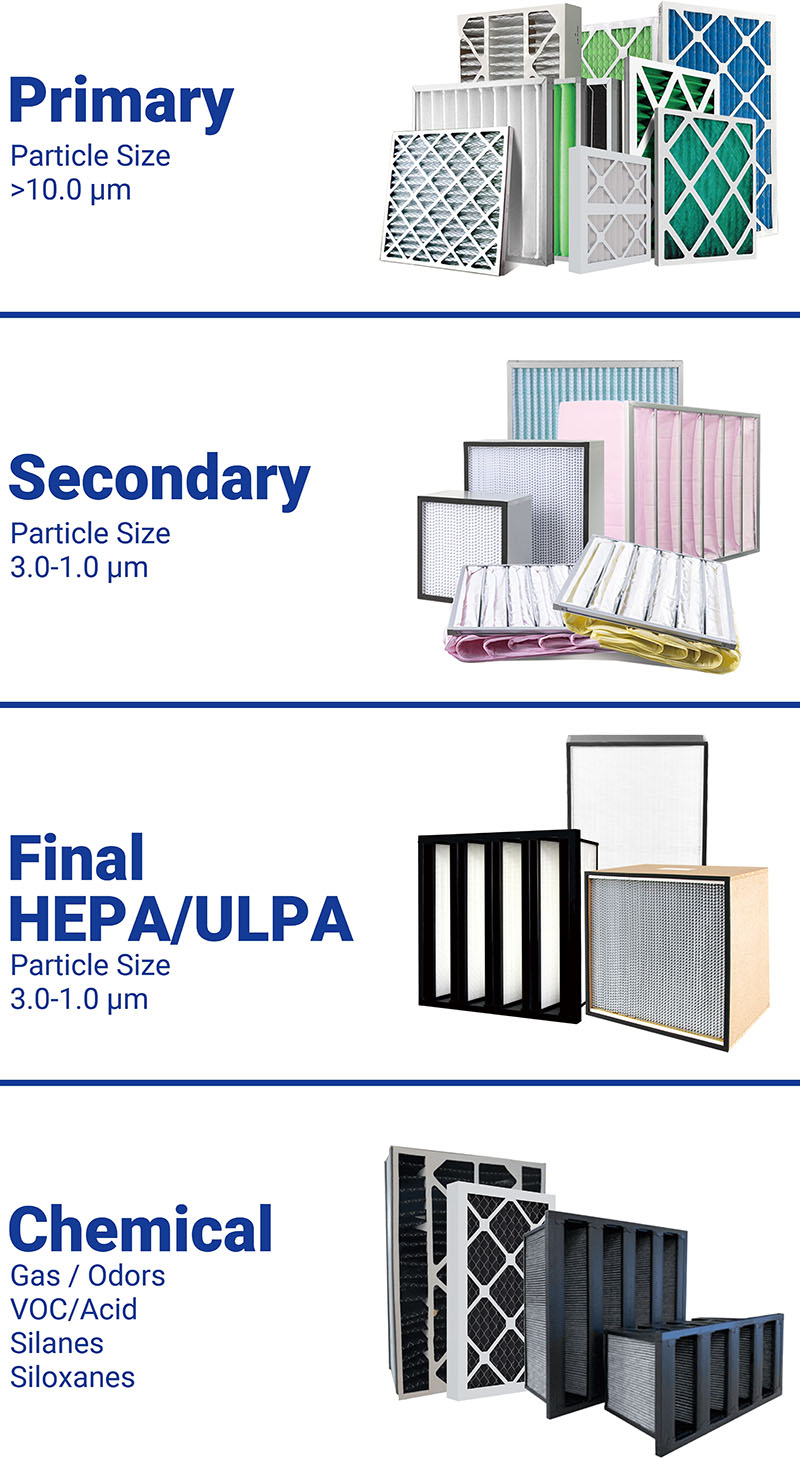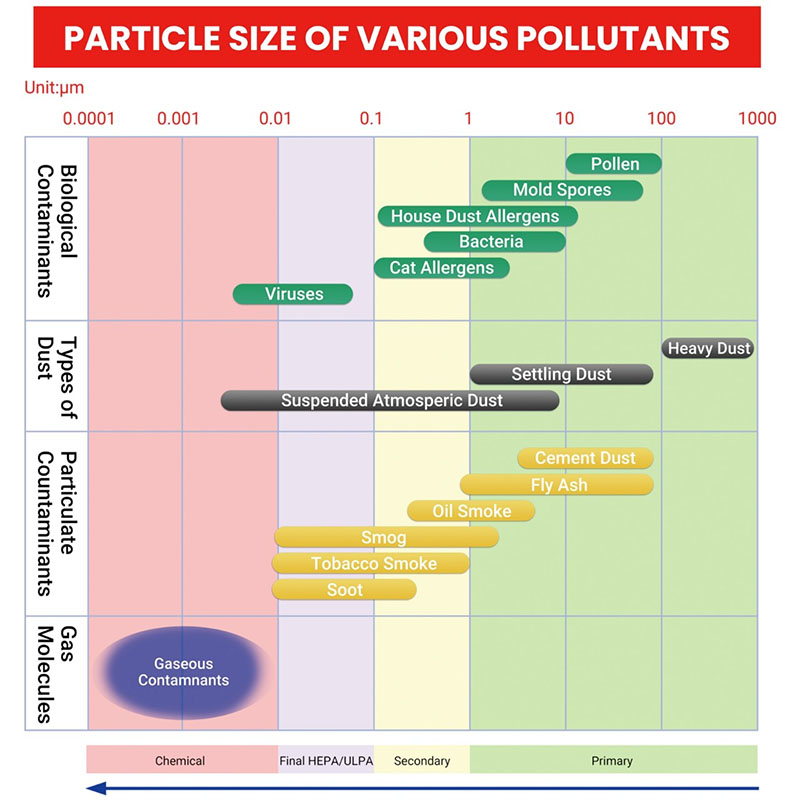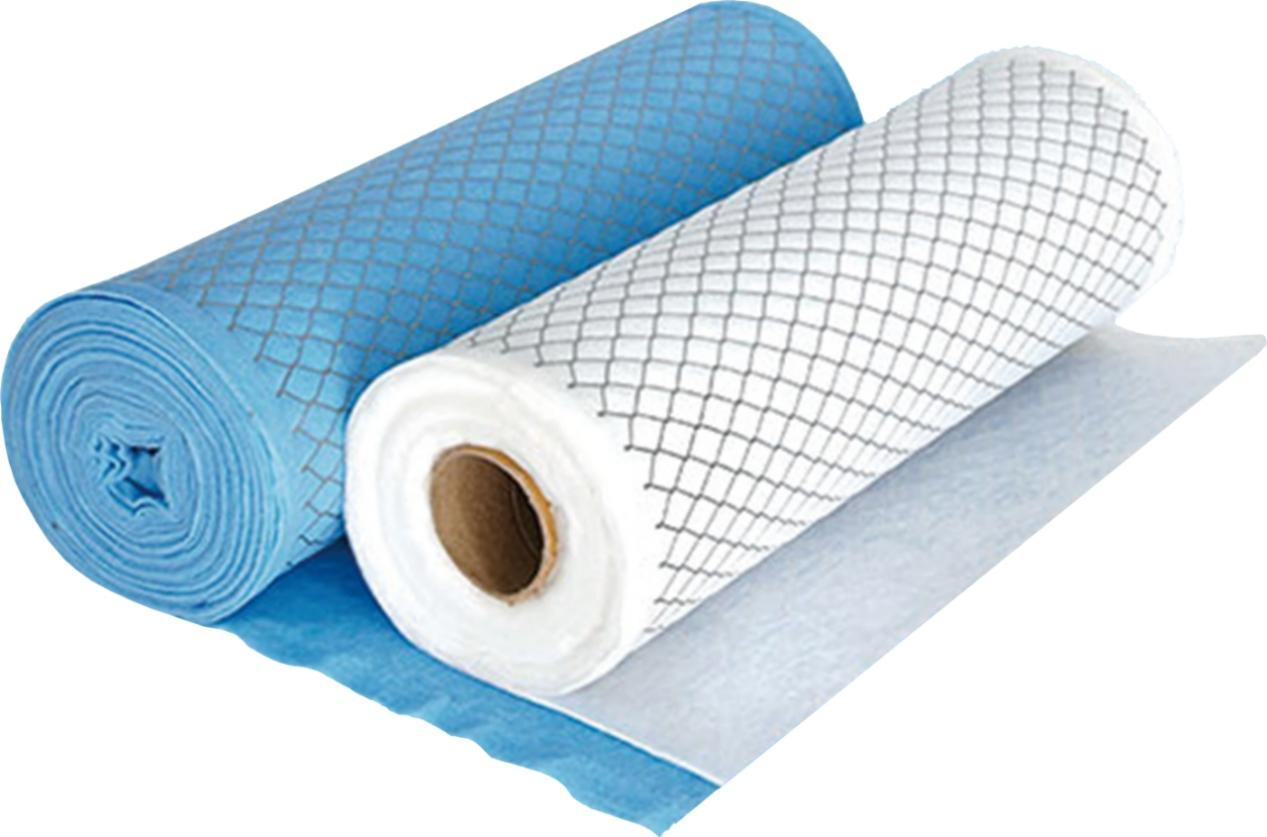Introduction to Air Filter Materials at Nail Technology Co., Ltd.
Nail Technology Co., Ltd. is a leading high-tech enterprise specializing in the research, development, production, and sales of high-efficiency filtration products. Our air filters utilize a variety of advanced materials, designed to provide exceptional filtration performance and durability to meet diverse application needs. Here are the main materials used in our air filters:
1. Fiberglass Filter Media
Fiberglass is one of the most common materials used in air filters due to its high filtration efficiency. It is made of finely woven glass fibers that can capture tiny particles in the air, including dust, pollen, and mold spores. Fiberglass filter media has excellent high-temperature resistance, making it suitable for industrial and commercial environments with high-temperature filtration needs.
2. Synthetic Fiber Filter Media
Synthetic fiber filter media is typically made from materials such as polyester or polypropylene, known for their excellent strength and durability. These fibers can capture small particles while maintaining low air resistance, thus improving the efficiency and energy-saving capabilities of the filter. Synthetic fiber media is ideal for use in residential, commercial, and industrial air filtration applications.
3. Activated Carbon Filter Media
Activated carbon filter media is a special material known for its adsorption properties, effectively removing odors and harmful gases from the air, such as volatile organic compounds (VOCs) and ozone. Activated carbon filter media is often combined with other filter materials to provide comprehensive air purification solutions and is widely used in homes, offices, and automotive air conditioning systems.
4. High-Efficiency Particulate Air (HEPA) Filter Media
HEPA filter media is the core of high-efficiency filters, capable of capturing over 99.97% of particles as small as 0.3 microns. HEPA media is typically made from micro-glass fibers or ultra-fine synthetic fibers, making it suitable for environments with extremely high air quality requirements, such as hospitals, laboratories, and clean rooms. Nail Technology's HEPA filter media undergoes rigorous testing to ensure superior filtration performance and long-lasting durability.
5.Antibacterial Filter Media
Nail Technology also offers antibacterial filter media that inhibits the growth of bacteria and fungi by incorporating antibacterial agents into the media. This type of filter media is especially suitable for healthcare facilities, food processing plants, and other environments where strict hygiene standards are required.
Conclusion
Nail Technology Co., Ltd. is committed to providing customers with efficient and reliable air filtration solutions through continuous innovation and strict quality control. Our diverse range of filter media options can meet various environmental and application needs, ensuring clean and safe air. Whether for industrial, commercial, or residential use, Nail Technology's air filters deliver exceptional performance and lasting protection.
For more information about the materials and products of Nail Technology's air filters, please visit our website or contact our sales team. We look forward to providing you with the highest quality filtration solutions.air.


Introduction and Comparison of Mesh-Covered Cotton Material
Product Introduction
Mesh-covered cotton is a filtering material composed of high-quality cotton fibers combined with a metal mesh. This unique structure makes it excellent for various applications, such as air and water filtration. Our mesh-covered cotton products are made with the latest production techniques and premium materials to ensure superior performance in all aspects.
Advantages of Our Company’s Mesh-Covered Cotton
1. Thicker, More Durable Steel Wire
- We use thicker, more robust steel wire mesh combined with cotton fibers, enhancing the overall structural strength and durability.
- This design ensures that the mesh-covered cotton does not easily deform or get damaged during prolonged use, extending the product’s lifespan.
2. High Cost-Performance Ratio
- Despite using high-quality materials and advanced techniques, our products are competitively priced.
- Compared to similar products on the market, our mesh-covered cotton achieves the best balance between performance and price, offering a higher cost-performance ratio.
3. High Filtration Efficiency
- Our mesh-covered cotton excels in filtration efficiency, effectively filtering various fine particles and impurities.
- Whether used for air or liquid filtration, our products provide stable, efficient filtration performance, meeting the needs of different scenarios.
Comparison with Other Brands

Application Areas
- Air Filtration**: Suitable for air purification systems in industrial and domestic environments.
- Water Filtration**: Can be used in drinking water treatment and industrial wastewater treatment.
- Other Filtration**: Widely used in various industrial production processes requiring efficient filtration.
Conclusion
By choosing our company’s mesh-covered cotton material, you will gain a product that is more durable, cost-effective, and efficient in filtration. From material quality and lifespan to filtration performance, our products provide the best solutions for your filtration needs.

Understanding the Differences Between MERV and HEPA Filters
MERV Filters:
MERV, or Minimum Efficiency Reporting Value, is a rating system used to measure the effectiveness of air filters in removing airborne particles. The MERV rating scale ranges from 1 to 20, with higher numbers indicating more effective filtration. This system assesses the filter's ability to capture particles of varying sizes, including dust, pollen, pet dander, and other contaminants.
MERV ratings are determined by testing a filter’s efficiency in capturing particles of specific sizes and then calculating an overall rating based on these results. Here’s a breakdown of different MERV rating categories:
- MERV 1-4: Typically used in residential systems, these filters effectively capture larger particles like dust mites, pollen, and carpet fibers.
-*MERV 5-8: More effective at capturing smaller particles, such as mold spores and pet dander, these filters are common in commercial buildings and homes with pets.
- MERV 9-12: Capable of capturing smaller particles like bacteria and tobacco smoke, these filters are often used in hospitals and other medical settings.
- MERV 13-16: Among the highest-rated filters, they can capture small particles such as viruses and fine allergens. They are typically used in cleanrooms and highly sensitive environments like testing labs and semiconductor manufacturing.
It’s important to note that while higher MERV ratings indicate better filtration, they may also reduce airflow and increase pressure in HVAC systems. It is recommended to consult with professionals to determine the appropriate MERV rating for your specific needs.

HEPA Filters:
HEPA stands for High-Efficiency Particulate Air. HEPA filters are designed to capture very small particles such as pollen, dust, and smoke. These filters are commonly used in air purifiers, vacuum cleaners, and HVAC systems to improve indoor air quality.
HEPA filters are rated based on their ability to capture particles of various sizes. A true HEPA filter can capture at least 99.97% of particles as small as 0.3 microns. While MERV ratings range from 1 to 20, HEPA filters are typically considered equivalent to MERV 17-20, indicating their high efficiency in capturing tiny particles.
However, it's important to note that HEPA filters are not designed to capture gases or odors. To address these issues, some air purifiers include additional filters, such as activated carbon filters, which are effective at removing gaseous contaminants and unpleasant smells.
Conclusion:
Both MERV and HEPA filters are essential for maintaining clean indoor air, but they serve different purposes depending on the specific application. MERV filters are available in a range of efficiencies suitable for various environments, while HEPA filters are specialized for capturing the smallest particles, making them ideal for settings that require the highest level of air purity. When selecting an air filter, it's crucial to consider the specific needs of your environment and consult with experts to ensure the best choice for optimal air quality.Filter grade table of MERV and HEPA
MERV (Minimum Efficiency Reported Value) and HEPA (High Efficiency Particulate Air) are two different air filter rating systems. MERV ratings are based on the ability of air filters to remove large particles from the air, while HEPA ratings are based on the ability of air filters to remove smaller particles from the air. The following table compares the filtering levels of MERV and HEPA:

In general, HEPA filters are more effective than MERV filters at capturing smaller particles, such as bacteria, viruses, and allergens. HEPA filters have a minimum efficiency of 99.97% for particles 0.3 microns or larger, while MERV filters have a maximum efficiency of 95% for particles 0.3 to 1.0 microns in size. However, MERV filters are more commonly used in residential and commercial HVAC systems, as they provide adequate filtration for most applications at a lower cost.
How to distinguish between MERV and HEPA filtration levels?
Both MERV(Minimum Efficiency Reported Value) and HEPA(High Efficiency Particulate Air) are used to measure the effectiveness of air filters, but they have different rating systems.
MERV ratings range from 1 to 20, with higher values indicating better filtration efficiency. The MERV rating indicates the filter's ability to capture particles of different sizes, including pollen, dust mites, and pet dander. However, the MERV rating does not measure the filter's ability to capture tiny particles such as viruses and bacteria.
HEPA filters, on the other hand, are highly efficient at trapping small particles. HEPA filters must capture at least 99.97% of particles 0.3 microns or larger. HEPA filters are commonly used in medical facilities, laboratories, and other environments where air quality is critical.
In summary, the MERV rating is used to measure the filter's ability to capture larger particles, while the HEPA rating is used to measure the filter's ability to capture smaller particles. If you need a filter that can trap very small particles, such as viruses, then a HEPA filter may be the best option. However, if your main concern is capturing larger particles, such as dust and pollen, a filter with a high MERV rating may be sufficient.
Key Factors Affecting Quality of Industrial HEPA Air Filters
HEPA air filters are one of the most common high efficiency filter materials being applied in industrial, medical, and construction areas, which the efficiency and quality are directly involved with the health and safety of the users. However, producing high quality HEPA air filters is not an easy task as many factors shall be taken into consideration. In the following paragraphs, we will talk about the key factors that influence the quality of industrial HEPA air filters in terms of the materials, manufacturing process, design and testing.
1. Design
The design and testing of HEPA air filters are also key factors that affect the quality and performance. In terms of design, it is necessary to select the most suitable filter structure and shape according to the application and usage requirements to secure and improve the filter efficiency and lifetime effectively. In addition, the design also needs to consider how they can be easily used and maintenance of the filter, in order to make it easier when the users are making the filters replacement and clean.
2. Material
The material of HEPA air filter is the milestone to ensure its quality and filtration effect. In the selection of material, it is necessary to consider the filtration efficiency, durability, safety and cost. The most commonly used filter media include PP (polypropylene) for high efficiency, PET, PP and PET composite high efficiency media, as well as glass fiber high efficiency filters, among which glass fiber is one of the most widely used considering its good filtration performance, high temperature resistance and chemical stability. What’s more, it can effectively filter microscopic dust and microorganisms. In the selection of filter media, we also need to pay attention to the safety and environmental friendly of the materials, to meet the standards and ensure the health of users with environmental protection.
3. Manufacturing
The manufacturing process of HEPA air filters is also one of the important factors affecting their quality and performance. In the process of the manufacturing, each part of the filter should be strictly controlled, including the media cutting, folding, laminating, as well as the production and assembly of the frames to secure the filtering efficiency and lifespan of the filter. In particular, in the process of assembly and fixing, it is necessary to ensure the tightness and strength of each interface to avoid leakage or damage, which may impact the filtration efficiency.
In addition, to avoid the filters being contaminated or other external environmental influences, the mass production process will be carried out in a clean room. it is generally recommended that HEPA filters be manufactured in a cleanroom environment. This is because HEPA filters are used to remove very small particles from the air, and even tiny amounts of contamination can significantly reduce their effectiveness.
Cleanrooms are specially designed environments that are controlled to minimize the amount of airborne particles, dust, and other contaminants. They typically have high-efficiency air filtration systems, strict protocols for entering and exiting the room, and specialized cleaning procedures to maintain the cleanliness of the environment.
Manufacturing HEPA filters in a cleanroom helps ensure that the filters are free from contaminants that could compromise their performance. It also helps ensure that the filters meet the strict standards for air purity required in many industries, such as aerospace, pharmaceuticals, and microelectronics.
4. Testing
HEPA filters are designed to remove small particles and pollutants from the air, making them an important part of indoor air quality management. In-house testing of HEPA filters is important to ensure that they are working effectively and efficiently. In the process of testing, the testing methods should be focused to ensure the accuracy and reliability of the tests. During the testing process, the filter’s filtration efficiency, pressure drop, air leakage rate and pressure drop, etc., need to be checked to ensure the performance and the filter qualities.

What is a bag filter?
Pocket filters or bag filters with deep pockets and tilted filter media are sewn and secured to a sliding metal or plastic frame and sealed into a frame built into the air handling unit.
The deep pockets used by bag filters allow for higher face speeds and higher dust than the same face size as panel air filters, and are generally at lower airflow resistance.
P-blocking filters can greatly improve air quality by removing fine particles such as pollen, carbon black and dust. It is recommended to replace it every 3-6 months depending on the use and environment for best performance.
As a professional manufacturer, our company can offer a wide variety of pocket filters with different efficiency and different sizes. You can learn more about Pocket filters by emailing sales@nailtechfilter.com.


